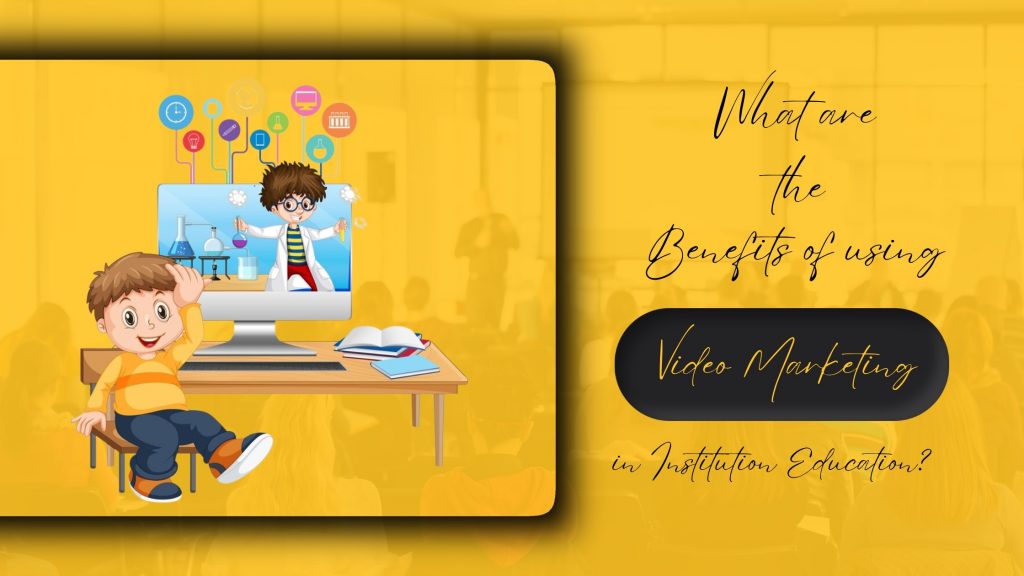In the world of educational institutions, the integration of video marketing has emerged as a powerful tool for enhancing learning experiences, engaging students, and promoting institutional excellence. From primary schools to universities, video marketing offers a dynamic and immersive way to convey educational content, communicate key messages, and connect with diverse audiences. At BOXmedia, we recognise the transformative potential of video marketing in education, and we’re here to explore its benefits and provide strategies for leveraging this innovative approach effectively.
Understanding the Benefits of Video Marketing in Educational Institutions
1. Enhanced Learning Experiences
Video marketing enriches learning experiences by providing visual and interactive content that complements traditional teaching methods. Through educational videos, students can engage with complex concepts, observe practical demonstrations, and explore real-world applications, enhancing their understanding and retention of course material. Whether through tutorials, lectures, or virtual field trips, videos offer a dynamic and accessible way to cater to diverse learning styles and preferences.
2. Increased Engagement and Retention
Videos captivate students’ attention and foster engagement by delivering content in a visually compelling and interactive format. By incorporating multimedia elements such as animations, graphics, and simulations, educators can create immersive learning environments that stimulate curiosity, creativity, and critical thinking. Engaged students are more likely to participate actively, retain information, and achieve better learning outcomes, ultimately enhancing the overall educational experience.
3. Accessibility and Flexibility
Video marketing promotes accessibility and flexibility by providing on-demand access to educational content anytime, anywhere. Students can access videos from their computers, tablets, or smartphones, allowing them to review material at their own pace and convenience. Additionally, videos accommodate diverse learning needs and preferences, making learning more inclusive and accessible to students with varying abilities, backgrounds, and learning styles.
4. Personalised Learning Opportunities
Videos facilitate personalised learning experiences by allowing educators to tailor content to individual student needs and interests. Through adaptive learning platforms and interactive video modules, educators can customise learning pathways, provide targeted feedback, and track student progress in real time. Personalised learning fosters student autonomy, self-directed learning, and academic success, empowering students to achieve their full potential.
Strategies for Leveraging Video Marketing in Educational Institutions
1. Curriculum Integration
Integrate Videos into Curriculum
Embed videos seamlessly into the curriculum to enhance teaching and learning across subject areas. Align videos with learning objectives, course content, and instructional goals to reinforce key concepts and facilitate active engagement. Incorporate a variety of video formats, including lectures, tutorials, case studies, and demonstrations, to cater to diverse learning needs and preferences.
2. Interactive Learning Activities
Create Interactive Video Modules
Develop interactive video modules that encourage student participation and engagement. Incorporate interactive quizzes, polls, and discussions into videos to assess student understanding, prompt reflection, and facilitate peer-to-peer collaboration. Encourage students to interact with videos actively by posing questions, sharing insights, and applying concepts in real-world scenarios.
3. Flipped Classroom Approach
Implement Flipped Classroom Model
Adopt a flipped classroom approach by assigning pre-recorded videos as homework assignments and using class time for collaborative activities, discussions, and hands-on learning experiences. This approach maximises instructional time, promotes active learning, and allows educators to focus on facilitating deeper understanding and application of concepts during class sessions.
4. Multimedia Resources
Curate Multimedia Resources
Curate a library of multimedia resources, including educational videos, documentaries, and online tutorials, to supplement classroom instruction and support independent study. Provide students with access to diverse content sources and encourage them to explore topics of interest at their own pace. Incorporate multimedia resources into project-based learning activities, research assignments, and group projects to enrich learning experiences and promote self-directed inquiry.
Conclusion: Harnessing the Power of Video Marketing in Education
In conclusion, video marketing offers a myriad of benefits for educational institutions seeking to enhance teaching and learning experiences, engage students, and foster academic success. By leveraging the power of videos to deliver compelling content, facilitate interactive learning experiences, and promote personalised instruction, educators can create dynamic and inclusive learning environments that inspire curiosity, creativity, and lifelong learning. Whether through curriculum integration, interactive learning activities, or multimedia resources, video marketing holds immense potential for transforming education and empowering students to thrive in today’s digital age.
If you want to read more information about how to boost traffic on your website, just visit boxmedia. Explore the world of video marketing in education with BOXmedia and discover how our expertise can help educational institutions harness the power of video to drive engagement, enhance learning outcomes, and inspire the next generation of learners.

